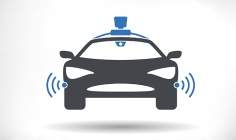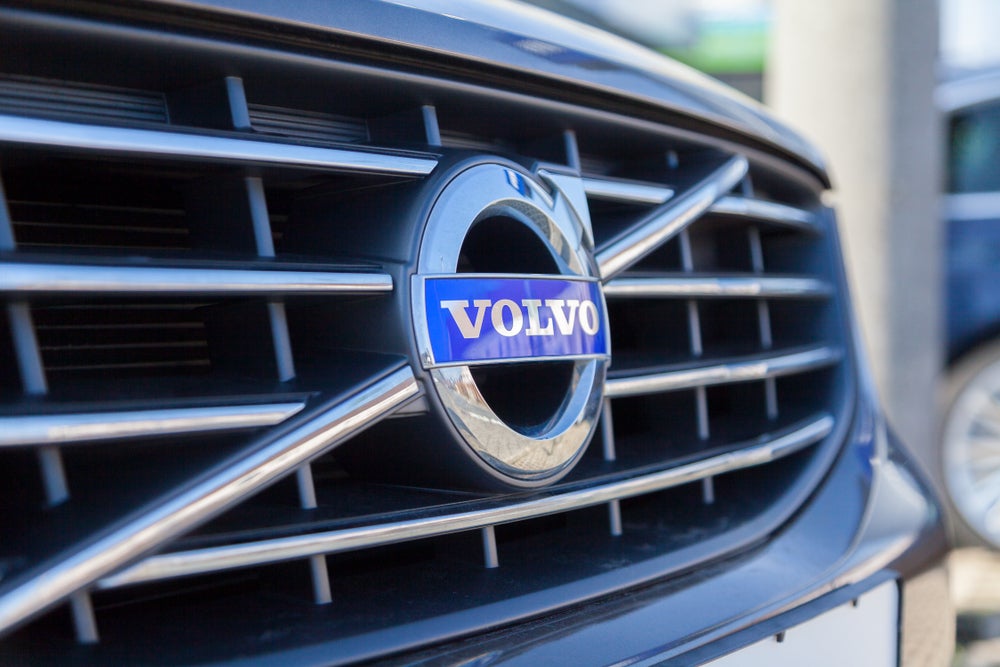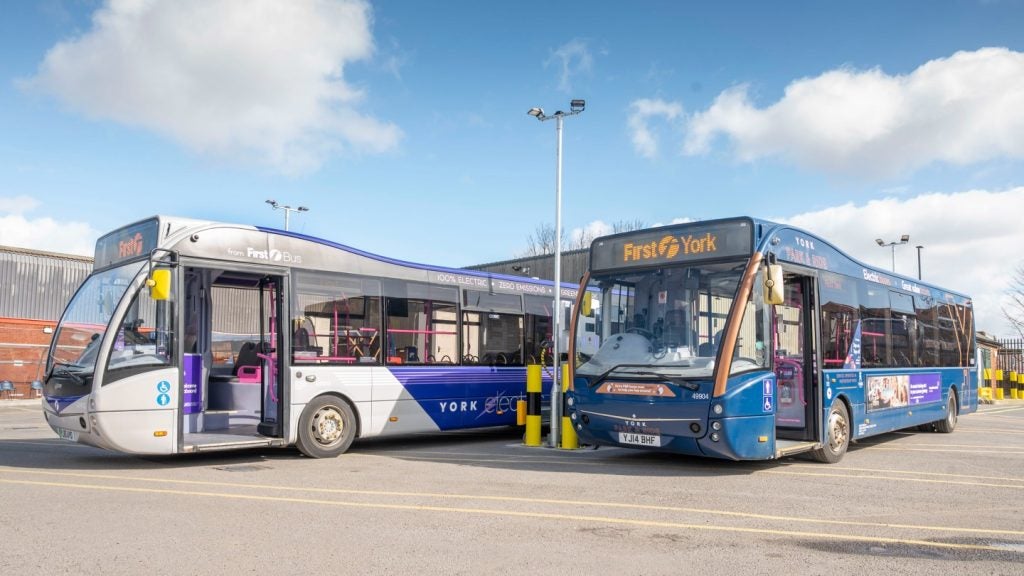
As the world moves ever closer towards fully autonomous cars, Jonathan Minter investigate the potential of driverless technology.
On a small test track in Crowthorne, Berkshire, in 1963 the Conservative politician Lord Hailsham became one of the first people in the world to experience an autonomous vehicle. The car in question was a Citroën DS, which used cables underground to guide itself around the track at a constant 80mph, despite its ‘driver’ barely touching the wheel.
While the experiment proved there was at least the potential for autonomous cars to replace manual cars eventually, the reality was that technology had a long way to go before it could be used by the public.
It was only in 2013, 50 years after the Crowthorne tests, that the UK government announced plans to allow driverless car tests on public roads. While autonomous technologies such as cruise control were developed and improved during the intervening years, the idea that fully autonomous vehicles, or driverless cars, could soon become a reality only came back into the public zeitgeist as the millennium hit its teenage years.
One of the key sparks to this revolution in public perception was undoubtedly Google. The Californian internet and technology giant spent millions of dollars developing and publicising the technology, and made great strides in both regards.
Yet while Google’s fully autonomous pods are usually near the top of people’s lists when talking about autonomous cars, they are far from having a monopoly. The vast majority of manufacturers have also invested heavily in the technology, along with an array of academics, technology firms, think tanks and so on.
How well do you really know your competitors?
Access the most comprehensive Company Profiles on the market, powered by GlobalData. Save hours of research. Gain competitive edge.

Thank you!
Your download email will arrive shortly
Not ready to buy yet? Download a free sample
We are confident about the unique quality of our Company Profiles. However, we want you to make the most beneficial decision for your business, so we offer a free sample that you can download by submitting the below form
By GlobalDataConnectors
According to one such think tank, SPA Future Thinking, the association between Google pods and driverless cars is having a dramatic effect on perceptions of driverless cars. SPA use people they term ‘connectors’ to monitor interest in certain topics. The ‘automotive connectors’ they use for cars are four times more likely to engage with social media, three times more likely to engage with product ratings online, and will on average spend £9,000 more than the average person on their cars.
Yet according to SPA surveys these people, who are typically at the forefront of motoring trends, are not overly excited by autonomous cars.
Richard Barton, managing director of SPA, says that the dominant nature of the Google narrative on the technology is causing some of this demographic to hesitate: "They often view driverless cars as being like the mobility pods being trialled in Milton Keynes. The messaging from the big manufacturers, for instance with the S Class intelligence drive, isn’t what they [the connectors] are thinking about when they’re thinking about driverless cars.
He continues: "Part of the problem with this is our connectors love cars, they love the brands and they love driving. So having a mobility pod in Milton Keynes is kind of the antithesis of what they believe a car should be."
His colleague Lisa Bedwell, research director at SPA, agrees: "This may be starting to pigeonhole it into a particular part of a mobility solution as opposed to a real alternative, for our connectors at least."
As a result she says this could affect who the early adopters are: "The fact that so few [SPA automotive connectors] are really saying they intend to buy in the future, and they’re not necessarily convinced about the benefits of the technology, suggests it will be a different demographic of people that start to adopt this."
Part of the reason Google has been able to control the conversation on driverless cars to such an extent is that it comes with no pre-existing automobile baggage or motor customers to worry about. In contrast, manufacturers have not had this luxury, and instead need to pay attention to existing drivers.
Two approaches
According to Dr Nick Reed, TRL academy director and technical lead on the GATEway driverless vehicles project underway in Greenwich, this has led to two approaches to introducing technology. On the one hand, he says: "Google is going full automation all the time". On the other he says: "From the vehicle manufacturers’ point of view, they need to be delivering things that are more commercially appropriate and ready to be used by their customers, so they need to be more incremental in their approach."
"But there’s also a difficulty for them because your market proposition is based on the driving experience and you’re suddenly saying you don’t need to drive for most of the time, so suddenly your position changes quite dramatically. So there’s a degree of caution about how far to push this by the vehicle manufacturers."
However Reed notes that the technology coming out of manufacturers is developing at pace regardless. This is a dilemma Phil Blythe, chair of the Institution of Engineering and Technology (IET) Transport Policy panel, agrees with. For example, he says: "OEMs are incredibly cautious in what they do release because they’re absolutely concerned about their reputation with their customers. So they will be as cautious as they need to be to protect their image and avoid bad publicity."
At the same time, he says competition means that OEMs are forced to develop at pace: "It astonishes me at times just how fast technology has moved on. I’ve worked on these intelligent transport system research programmes for many years now. Even eight years ago stay-in-lane technology was virtually blue sky research. Four years later Citroën was selling it in mid-range cars. So the move to market can come very quickly because manufacturer’s want their USP before somebody else does it."
Regardless of the route companies take when developing their technologies, a number of challenges remain. One such worry is the potential havoc an external hacker could cause on fully autonomous cars.
Dr Deeph Chana, deputy director of the Institute for Security Science and Technology at Imperial College London, is also working on the GATEway project and says a lot of the discussions have been on issues of cybersecurity from hackers, but the reality is far more complicated than that: "It’s a sexy topic to talk about hacking, and it’s an important aspect of what we have to consider. But it’s a bit broader than that," Chana says.
"You have to start thinking about other things like parts failing not necessarily through malicious intent, and failing
safety."
While technology has developed significantly in recent years, there still remain technical challenges, says Reed at the TRL. "So what are the ways in which vehicles talk to each other and the infrastructure – that is to say, communicate with traffic controls and traffic lights and so on," he says.
There are also safety questions which remain regarding the inevitable crossover period where some people have autonomous vehicles and others are driving their cars manually. This topic has proved difficult to investigate fully, however there has been some research done by a colleague of Reed at the TRL.
This was in relation to platooning, whereby a lead car is manually driven, and the cars behind are driven automatically through communication with the front of the platoon. As this is computer controlled, platooning vehicles are able to drive much closer to one another than is traditionally safe.
This technology, IET’s Blythe explains, has a number of benefits: "Arguably it could make life very safe – you’re controlled so you can’t crash into the car in front. You can squeeze more capacity into the network because these cars are driving close to each other, and therefore you can fit more cars onto the road. Thirdly you could get quite an eco-benefit out of it because if the car at the front is driving at an eco-optimum speed, then all the other vehicles following will benefit."
However the TRL found that in cases where trucks in one lane were platooning, vehicles to the right, being driven by humans, would generally follow other vehicles more closely themselves, increasing the likelihood of these vehicles having an
accident.
According to Reed: "It might be a contagion effect, whereby you adapt to the short following distances other vehicles are following and that becomes the established norm.
This is only one difficulty with autonomous technology, and Reed adds: "There are a number of other interesting secondary effects we need to get our heads around."
Questions also remain over potential regulation and insurance. Mel Chell, a partner at Shoosmiths, says: "The question will be who is at fault? You’re going to have to rewrite the insurance terms and condition for this type of vehicle because it won’t be driver fault anymore.
"But the driver will presumably have to take responsibility for the vehicle and then there’s going to be masses of litigation around the technology and the quality of the technology, and whether it’s safe and durable."
She continues: "From a legislative perspective, lawyers always try to make sure we understand what the legislation says we can and can’t do, and then make sure everything is contractually as watertight as possible. You can’t contract out of an obligation to pay in the event that there’s personal injury, but there are things you can exclude liability for. The courts will need to have discussions around what’s fair and reasonable, so there will be a lot of case law coming out around what you can exclude, and what is fair and reasonable."
There also still remains potential challenges related to public acceptance. According to SPA’s Bedwell, for example, a number of people questioned by the think tank independently brought up the potential scenario of having autonomous cars needing to choose between two inevitable accidents as an issue.
Despite this, the SPA is not overly concerned. Barton notes: "Inevitably, with any type of technology, while it’s in its infancy, there will be low acceptance rates until people see its benefits. Then people will start to understand. And actually as cars come to the street that have some of these features, and are semi-autonomous, that will be a pathway to full automation.
Potential benefits
There will be a number of benefits to consumers. One area IET’s Blythe highlights is potentially improving traffic management. He says: "If you’ve got the infrastructure in contact with these vehicles, you’ve got the opportunity to really optimise the traffic management better and get the vehicles to do what’s the best thing for the traffic in a particular area – whether it’s the speed they travel at, the routes they choose, and things like that. That delivers optimisation benefits in terms of traffic, but there are also safety and eco-driving benefits."
Another benefit spoken about is the potential to enable the mobility impaired to travel. Blythe says: "Those who are not safe to drive a car anymore , maybe due to getting older, with a little bit of automation – I’m not talking about full driverless here – might be able to continue driving and maintaining their social networks for a number of years."
According to Chana at Imperial College, the move to automation will provide an opportunity for companies involved in vehicles to collect unparalleled levels of data, but warns: "It’s part of a much wider discussion of what happens with digitally enabled products and what ownership means when you start owning these sorts of products."
While this will no doubt lead to a number of debates on the topic, Chana says the potential is there to benefit both consumers and all sides of the automotive supply chain. He says: "Data selling is potentially something companies will think about, but also using the data to understand what their new product lines might look like is something which will be of interest and be of immediate value.
"So being able to figure out whether or not there are new software products they can deliver to make their systems more competitive in the market, based on data, on things they know are missing, and based on things they know the consumers want." Using this data, companies will then, in theory, be able to tailor their products better to real world usages.
From an insurance point of view, Chell notes this has the potential to reduce premiums. She says "You’ve got insurance companies now saying if you’re a safe driver and you allow us to put a box in your car, you can reduce your premiums. That’s interesting from an autonomous car perspective. If it’s driving itself, presumably it’s only going to drive within the speed limits, so does that mean your premium is going to be lower?"
Ownership models
The general consensus of those talking to Motor Finance is that we are still years away from having fully autonomous cars becoming the norm for technological, regulatory and practical reasons. However Reed points out that there are already numerous examples of fully automated transport systems around the country, such as the Docklands Light Railway in London, monorails and so on.
He says: "Because of the way sensors and our computer vision algorithms and so on are developing, the sophistication of the environments through which those fully automated vehicles can travel is increasing. So things like the shuttle bus that we’re using [in the GATEway trials] is now capable of operating in a fully automated manner, mixing with pedestrians and cyclists and so on."
Therefore, he notes, the world is seeing fully automated transport operating in increasingly complicated environments at the same time that cars are gaining increasingly autonomous technologies. Eventually, Reed says, the two technology streams will start to converge.
Where and how these technologies converge will depend on what’s appropriate, he says, highlighting urban environments as being ideal for shuttle buses to service large numbers of people’s daily commutes, but automated cars being more appropriate for situations which require more flexibility.
If autonomous vehicles do give rise to more specialist usage of vehicles, and are able to drive themselves, this will potentially give rise to new forms of car ownership.
Ownership model
According to Reed, the potential for change in this regard is "big". He says: "Once a vehicle can drive itself, the ownership model can change dramatically. I don’t need to own the vehicle myself, I just summon the most appropriate one for the trip I wish to take. So for a commute of five miles that might be a small electric vehicle, or if I want to go camping with the family it would be a 4X4.
So you’d start to use vehicles that are more appropriate for the journey, not purchase one that will suite your entire mobility needs, which is what people do today, he says.
According to Blythe, this change to ownership models is already happening. He says: "We’re seeing it with electric vehicles. To make electric vehicles attractive for all the times people want to use their car, some companies have the idea that you have bought your car, but if you need a car with a longer range or a bigger space for a weekend, you can bring yours to the showroom, and swap it for a weekend.
"So although in that case they still own or lease a car, they see mobility as a service where they can swap it for something else when they need something more fit for purpose for a particular journey. Over time, with some gradual acceptance, we may see ownership models changing in the sense that you may not want to own a car that is parked on your drive for 23 hours a day and not being used."
This move is something BMW’s fleet arm Alphabet has also noticed. Joe Burdekin, head of consultancy services at Alphabet, says: "Just a decade ago everyone, it seemed, preferred owning to sharing. But today more and more people value factors such as flexibility and convenience."
Alphabet has witnessed what he terms a "generational transition" from ownership to leasing and sharing models. "With this in mind, leasing for the next five years is going to look very different from what it does today."
Although Burdekin notes fully autonomous cars are still a way off, when they do come he feels it will almost certainly change perceptions of vehicle ownership.
"Will future generations want the cost and hassle of owning a vehicle for 24 hours a day, seven days a week if a fleet of cost-effective autonomous vehicles are readily available on demand?" he asks.
One potential issue Burdekin highlights is that cars are an emotive subject, and for many the role of a car goes beyond their functional use.
One possible solution he offers is a timeshare model: "One where you can buy time or miles travelled could become the norm rather than current ownership models. Already in the UK there’s a growing trend towards the sharing economy, shown by the success of Airbnb and JustPark.
"We’re seeing a generation of consumers and businesses taking the first steps in the direction towards usage rather than ownership models, such as car clubs or a corporate sharing solution like AlphaCity."
An Airbnb model is a model Reed also highlights, suggesting: "I cycle to work, so my car is at home doing nothing. But if Amazon wanted to use my car for deliveries and pay me for it then great, I’d love that. I could imagine companies springing up
saying "Here is a fleet of cars that between 7am and 9am services people’s commutes, and after that does deliveries until 4pm when it is used for the return commute. So it’s a much more efficient use."
Blythe points out that this model of shared car usage over ownership would have other benefits over traditional car ownership: "You could have companies that ensure whatever car you’re calling or waiting for to do the next bit of a journey has always got the latest bits of software, safety and liability pieces all sorted out."
To this he adds: "We’re seeing fewer people getting driving licences and owning cars. So there may be models where younger people will still want a licence, but won’t want the burden of owning a car 365 days a year."
In some regards this could be seen as the natural conclusion to the direction ownership has taken, with people increasingly turning to PCP. As Reed says: "People are viewing cars more like mobile phones, where they have them for two or three years and then upgrade. I can foresee a company which is a mobility provider. I’d pay, say, £200 a month, and for this they’d give me so many miles of travel That could be in an autonomous car, a train or a bus, but it all goes through a monthly contract."
While these potential changes to ownership models are probably some way off, they have the potential to completely change every aspect of the car market, including how vehicles are financed.
Chana is not alone in saying: "We’re on the verge of a real paradigm shift." The act of driving, which has remained more or less the same for decades, is undergoing substantial changes, and it’s likely that other elements of cars, such as how they are purchased or acquired, will change along with it sooner or later.
How the finance industry responds to what will undoubtedly be a challenge will likely be one of the dominating questions of the future.







